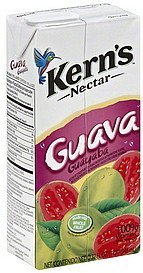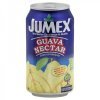Product pictures
| Amount Per 8 fl oz | |||
| Calories | 150 Kcal (628 kJ) | ||
| Calories from fat | 0 Kcal | ||
| % Daily Value* | |||
| Total Fat | 0g | 0% | |
|---|---|---|---|
| Sodium | 10mg | 0% | |
| Potassium | 60mg | 1% | |
| Total Carbs | 37g | 12% | |
| Sugars | 34g | 136% | |
| Dietary Fiber | 1g | 4% | |
| Vitamin C | 75mg | 125% | |
* Percent Daily Values are based on a 2000 calorie diet. Your daily values may be higher or lower depending on your calorie needs.
Find out how many calories should you eat.
Ingredients And Nutrition Overview
Best
choice Good
choice Poor
choice Avoid
it!
choice Good
choice Poor
choice Avoid
it!
-
WeightWatchers Points: 2.8, PointsPlus: 4, SmartPoints: 8
WeightWatchers Points are estimated by carbohydrates, fats, protein and fiber in product. They are not an affirmation of better quality or nutritional value of the product or its manufacturer. Only way to count for dieters. Less points are better.
Read more at Weight watchers diet review -
Convert Salt tsps to Sodium mg easily
Salt (NaCl) is not excactly sodium (Na).
It is not right to use these terms as synonyms.
The FDA recommended limit of sodium is 2,300 mg per day (or even less - about 1500 mg while one is on low sodium diets).
This is much less than the weight of salt.
(5,750 mg per day or 3,750 mg for low sodium diet) and not so convenient to calculate.
Know how much sodium is in your salt - without a calculator:
1/4 tsp salt = 600 mg sodium
1/2 tsp salt = 1200 mg sodium
3/4 tsp salt = 1800 mg sodium
1 tsp salt = 2300 mg sodium -
14 tsp of sugars per serving
This volume includes both naturally occurring from ingredients and specially added sugars.
USDA tells us that last years each American consumed an average 130 pounds of caloric sweeteners per year!
That works out to 30 tsp of sugars per day approximately 480 extra calories!
Just to think: Eating just 200 more calories daily than your body requires for body functioning and exercise leads to a 20-pound weight gain in a year. -
For dieters: FoodPoints value is 4
* FoodPoints are calculated by Fooducate based on fats, carbs, fiber, and protein. They are not an endorsement or approval of the product or its manufacturer. The fewer points - the better.
-
Contains high fructose corn syrup
High fructose corn syrup (HFCS) is a highly processed ingredient manufactured from surplus corn, and yielding a cheap replacement to table sugar. In the early 1980’s many food manufacturers started using it instead of sugar as a cost cutting measure. That’s about the same time obesity rates started to skyrocket in the US. Most scientists agree that HFCS is no better and no worse than plain sugar, though some newer studies seem to find the two affect the metabolism differently. Consumption of both should be drastically limited. ---- Sources: Bray GA, Nielsen SJ, Popkin BM. Consumption of high-fructose corn syrup in beverages may play a role in the epidemic of obesity. Am J Clin Nutr. 2004;79(4):537-43. Berkey CS, Rockett HR, Field AE, Gillman MW, Colditz GA. Sugar-added beverages and adolescent weight change. Obes Res. 2004;12(5):778-88. Johnson RJ, Segal MS, Sautin Y, Nakagawa T, Feig DI, Kang DH, Gersch MS, Benner S, Sánchez-Lozada LG. Potential role of sugar (fructose) in the epidemic of hypertension, obesity and the metabolic syndrome, diabetes, kidney disease, and cardiovascular disease. Am J Clin Nutr. 2007;86(4):899-906. Schulze MB, Manson JE, Ludwig DS, Colditz GA, Stampfer MJ, Willett WC, Hu FB. Sugar-sweetened beverages, weight gain, and incidence of type 2 diabetes in young and middle-aged women. JAMA. 2004;292(8):927-34. Ludwig DS, Peterson KE, Gortmaker SL. Relation between consumption of sugar-sweetened drinks and childhood obesity: a prospective, observational analysis. Lancet. 2001;357(9255):505-8. James J, Thomas P, Cavan D, Kerr D. Preventing childhood obesity by reducing consumption of carbonated drinks: cluster randomised controlled trial. BMJ. 2004;328(7450):1237.
-
Highly Processed!
This product is highly processed. If you'll take a look at its ingredient list, you'll discover new words to add to your vocabulary. Many of theses ingredients are required to increase the shelf life of the product and improve the flavor that disappears when food is not fresh.
-
Includes bug powder. Check out carmine
Carmine is a red food coloring made of ground up powdered Cochineal insects. Originating in Aztec Mexico, the females set up shop on cactii, where they breed and eat. The male lives for just one short week to reproduce and then dies. The Aztecs would collect the bugs, briefly boil them in water, dry the bodies in the sun and then pulverize them into a fine scarlet powder known as cochineal or carmine. The powder dye was used for royal garments and was later coveted by the Spanish conquistadors who brought it back to Europe. Food manufacturers began using it about 100 years ago to add luster to products such as pork sausages, dried shrimp, candies, jams, and maraschino cherries. Manufacturers prefer not to disclose their use of carmine and instead added "artificial color" to their ingredient list. Starting January 1, 2011, FDA mandates them to clearly identify the colorings as carmine or cochineal extract on food labels to help consumers identity the cause of their allergic reaction and avoid the colorings in the future.
-
Natural flavors added. Learn why
Companies add flavorings to make products taste better. They are created in a lab and the formulations are guarded as trade secrets. Flavorings can compensate for flavor loss during processing, substitute for ingredients, lower production costs and increase shelf stability. Natural flavorings are more expensive to source than artificial flavors, but tend to be better received by consumers. People sensitive to MSG, vegans, vegetarians and those with allergies should pay special attention to the phrase "natural flavorings" since glutamates, animal products or allergens may be the source of natural flavors. You can always contact the manufacturer for more information.
-
Learn about juice concentrate
Juice from concentrate is a juice that had most of its water content removed for storage and transportation purposes (why spend money on cooling or transporting water?). Concentrated juice can be held for months in cooled warehouses. When ready to bottle the juice, manufacturers reconstitute it by adding the exact same amount of water that was removed.
You Might Also Like
% RDI of Main Nutrition Facts
8%
of RDI* (150 calories) 236.8 g
-
Cal: 7.5 %
-
Fat: 0 %
-
Carb: 12.3 %
-
Prot: 0 %
-
0%25%75%RDI norm*
Calories Breakdown
- Carbs (100%)
Get Your Recipe of Health!
Follow RecipeOfHealth on Facebook!



















Add your comment